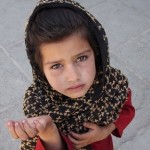Farmanullah Zaheer
Pakistan’s aspiration for peace and stability in its neighborhood, especially concerning Afghanistan, is deeply rooted in its understanding of the region’s geopolitical significance. This sentiment resonates with the philosophical musings of Allama Muhammad Iqbal, a revered Muslim philosopher, who highlighted the central role of Afghanistan in Asia’s harmony. Iqbal metaphorically described Asia as a body, with Afghanistan acting as its heart, suggesting that the region’s equilibrium depends significantly on Afghanistan’s stability. Iqbal says;
The recent events of March 16, 2024, highlight the complexities in the relationship between Pakistan and Afghanistan. A security checkpoint in Pakistan was cowardly attacked, resulting in the tragic loss of officers and personnel. Tehreek-e-Taliban Pakistan (TTP) accepted the responsibility of the attack, operating from Afghan territory. Pakistan, in response, launched airstrikes, targeting TTP bases in Afghanistan.
It was an unambiguous reminder of the ongoing security challenges and emphasized Pakistan’s resolve to defend its sovereignty, despite its economic adversities. However, it is evident that the incident has escalated tensions between the two nations, leading to strategic and economic repercussions. According to news sources, Pakistan has indicated plans to repatriate illegal Afghan immigrants post-Eid al-Fitr, signaling a tougher stance on border and immigration issues.
Furthermore, the Afghan Taliban’s government, showing resistance to Pakistani pressures, has begun diversifying its economic alliances, notably through a significant investment in Iran’s Chabahar Port. This move aims to enhance Afghanistan’s trade with India, reducing its economic dependency on Pakistan. These developments are not only affecting bilateral relations but have also had broader implications for regional trade dynamics. Afghanistan’s shift in trade partnerships, notably increasing its trade volume with India, has significantly impacted Pakistan’s economy, particularly in terms of reduced trade volumes and a widened trade deficit.
The internal political and security landscape within Pakistan, especially in regions like the Federally Administered Tribal Areas (FATA), further complicates the scenario. Despite attempts at development and integration, such as the merger of FATA with Khyber Pakhtunkhwa, the region remains embroiled in political dissatisfaction and economic challenges.
The resurgence of groups like the TTP and the discontent among local populations due to past military operations and displacement accentuate the deep-seated issues that need resolution for lasting peace. The intricate balance of trade, political, and security challenges raises a broader question of regional stability and economic prosperity for both nations Pakistan and Afghanistan.
The current scenario emphasizes the need for both Pakistan and Afghanistan to transcend past grievances and work collaboratively toward peace and economic stability. The emphasis must be on healing the wounds of the past, addressing the grievances of the affected populations, and fostering an environment conducive to economic development and regional harmony.
In conclusion, the path to peace and stability in the region is tense with challenges but remains an essential pursuit for both Pakistan and Afghanistan.
The vision articulated by Allama Iqbal serves as a reminder of the interconnectedness of the region and the imperative for harmony. As both nations navigate these turbulent waters, the focus must remain on diplomatic engagement, economic cooperation, and the collective well-being of their people, paving the way for a peaceful and prosperous future.
The author is a graduate and a member of the RFI Media Team.







